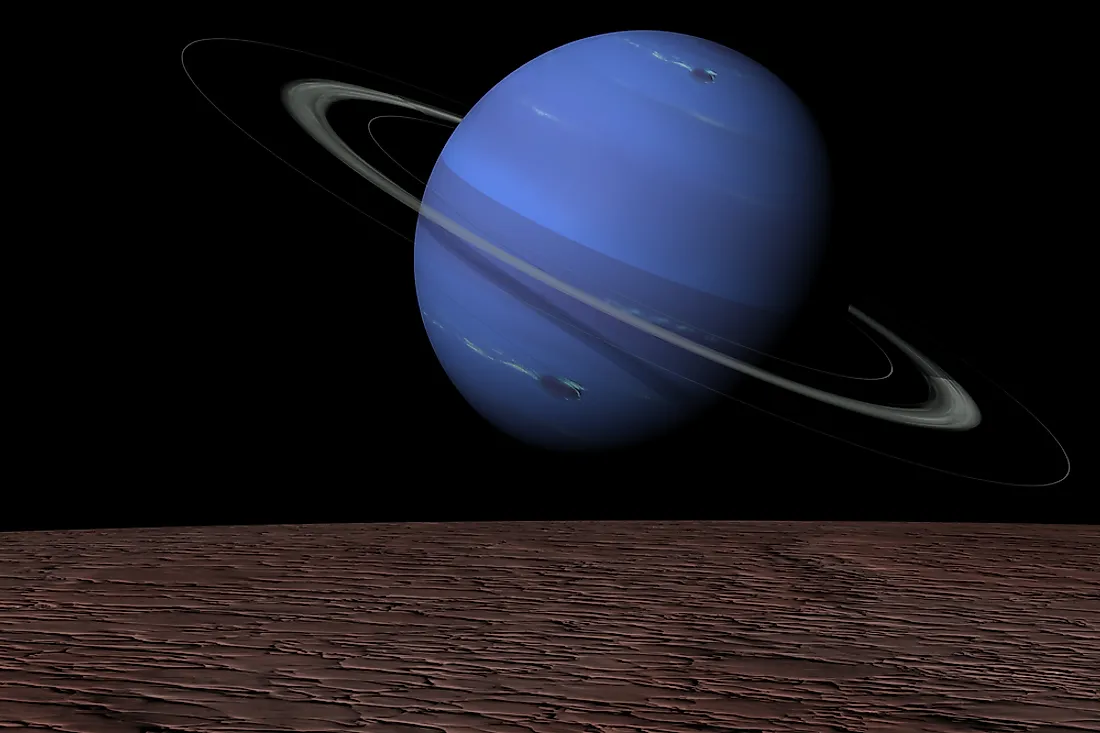The Rings of Neptune

The Planet Neptune
Neptune is the eighth planet from the sun and the third most massive planet. In terms of diameter, Neptune is the fourth largest planet. Neptune is a giant and a dense planet; it is 17 times larger than earth in mass. Furthermore, Neptune cannot be seen by naked eyes due to its distance. It is the only planet discovered by mathematical prediction. It consists of helium, hydrogen, and high proportions of ammonia, methane, and ice.
The Rings Of Neptune
Neptune's five rings were first discovered in 1984 by Andre Brahic's and William Hubbard's teams at the La Silla Observatory and the Cerro Tololo Interamerican Observatory. By combining that data from both Brahic's team and Hubbards team, astronomers confirmed the existence of a ring system around Neptune. The rings are named after astronomers who made great discoveries of the planet. Neptune rings are named Lassell, Le Verrier, Galle, Adams, and Arago. The Adams ring is unique because it has five arcs. These arcs are named Courage, Liberte, Fraternite, and Egalite 1 and 2.
The rings are made of very dark materials especially the organic compounds of radiation. Additionally, the rings fall under two categories: inner rings and outer rings.
The Inner Rings
Galle ring
Galle ring is the innermost of Neptune’s rings. It is named after John Gottfried who was the first scientist to discover Neptune using a telescope in 1846. It orbits 41,000 to 43,000 km from Neptune and it is 2,000 km wide. Galle ring is faint with a normal optical depth of 10-4. Its dust fraction is estimated to be 40% to 70%.
Le Verrier ring
Le Verrier ring is named after Urbain Le Verrier who predicted the position of Neptune in 1846. It is narrow with a width of 113 km and an orbital radius of 53,200 km. It has a normal optical depth of 0.0062, which is equivalent to 0.7 km. Its dust fraction ranges from 40% to 70%. Le Verrier has Despina moon that orbits inside it.
The Lassell ring
The Lassell ring is also referred to as plateau. It is the widest ring in the Neptune ring system. Lassell ring is named after William Lassell , an astronomer discovered Triton, Neptune’s largest moon. It is composed of a faint sheet of material lying between Le Verrier ring at 53,200 km and Arago ring at 57,000 km. It has a normal optical depth of 10-4, which is equivalent to 0.4 km. The Lassell ring’s dust fraction ranges from 20% to 40%.
Arago ring
The Arago ring is named after Francois Arago who was a politician, physicist, mathematician, and an astronomer. It lies 57,200 km from Neptune and it is 100 km wide.
The Outer Rings
The Adams ring
The Adams ring is the outermost ring named after John Couch Adams, who predicted Neptune’s position independent of Le Verrier. It is the best studied among Neptune’s rings and it has a radius of 63,930 km. The Adams ring is narrow with a width of 35 km and a normal optical depth of 0.0011 which is equivalent to 0.4 km. It also has a dust fraction of 20% to 40%. In addition, the Adams ring has the Galatea moon that orbits inside at 61,953 km. The Adams ring arcs form the brightest parts.
Other planets with rings
Apart from Neptune, other planets with rings include Saturn with seven rings, Jupiter with four rings, and Uranus with 13 rings.











